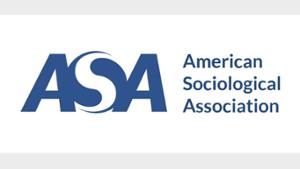
Silas D. Childs Professor in Chemistry Karen Brewer will focus on enlarging an already-existing small library of in-class polls for use in the large lecture-based, introductory chemistry course to increase student engagement. Assistant Professor of Art History Arathi Menon’s project will use 3-D technology to reconstruct the original surroundings of a select group of architectural fragments and sculptures to offer students the opportunity to move within the lived spaces of these artifacts virtually.
The program was created in 2019 to help facilitate Hamilton’s goal of building a campus-wide digital learning community. LITS has since funded several pilot course-based projects, including the creation of a website that allows for information from excavations in Oaxaca and Hamilton coursework to be shared more broadly, as well as a project focused on 3-D models of underwater biofilms that produce a 360-degree virtual reality immersive tour of Green Lake.
Learn more about this year’s recipients and their projects.

Silas D. Childs Professor in Chemistry Karen Brewer
LITS Consultants: Glynis Asu and Ben Salzman
Brewer's project will identify software that can support live, in-class polls employing universal design principles and develop questions that help students reflect on their learning in an environment that promotes equity, inclusivity, and belonging. She had used clickers, an interactive technology that enables her to ask students questions and immediately collect and view responses from the entire class, but wants to get more out of them than they were able to deliver.
“These might include questions on graphs, figures, equations, and problem-solving strategies that would deepen students’ application of what they are learning as well as their understanding in real time during class meetings,” she wrote in her proposal. “In addition, a more open formal will enable me to open a 'channel' for students to submit live questions during class or while they work to solve a problem and to receive short answer responses to questions such as ‘What was the muddiest point in class for you today?’"
Brewer noted that expanding the use of polling in Chemistry 120 aligns with Universal Design for Learning principles that advance equity and inclusion. This introductory course, she said, is considered an essential gateway to STEM concentrations and careers.
Before she began using clickers in class she found that, even though approximately two-thirds of her class was made up of female students, it was typically the male students who would answer questions. “It allows for a class in which everyone participates and in which the same people are not always answering the questions.”
LITS has worked to change the process from using a physical clicker to an app that a student can load on a phone. Students will join with Brewer to evaluate the app that is currently being used on a free trial basis.
“The goal is to be able to use the system as flexibly as possible – this kind of system could be used in a cross-section of classes especially larger introductory classes – in sociology or economics for example,” Brewer explained. “Perhaps one of the biggest advantages of the system is that it allows for more honest answers through anonymity, thereby also producing more diverse responses and opinions.”

Arathi Menon,
Assistant Professor of Art History
LITS Consultants: Lynn Mayo and Ben Salzman
Menon plans to expand a current module in her class, Collecting India, that concerns issues of provenance, aesthetic colonialism, the politics of collecting practices, and repatriation. Working with her LITS colleagues, she hopes to recreate findspots (places where an archaeological object has been found) of works of art as a pedagogical tool with which to deepen student-learning of the looting and trafficking of cultural artifacts.
“Standing with these artifacts as they once existed in history will aid students in the critical examination of the layered histories of these objects of cultural heritage and global significance and help students better understand their subsequent transformation in the museum context,” Menon wrote in her proposal. “I propose to offer students a means by which to virtually move within the lived spaces of these artifacts prior to their removal and, in the process, to introduce them to the benefits of employing digital technologies in the research and study of the history of art.”
This will allow Menon to expand the course and to show images in context. “Students fill in the blanks with research and engage deeply with the work,” she said. “That kind of learning is so invaluable – that aha moment when they get it.”
Digital Fluency
From using digital media to communicate and collaborate to exploring the potential uses of data, analytics, and computer modeling, Hamilton helps students navigate the ethical and societal implications of living in an online world.
Posted January 10, 2023


